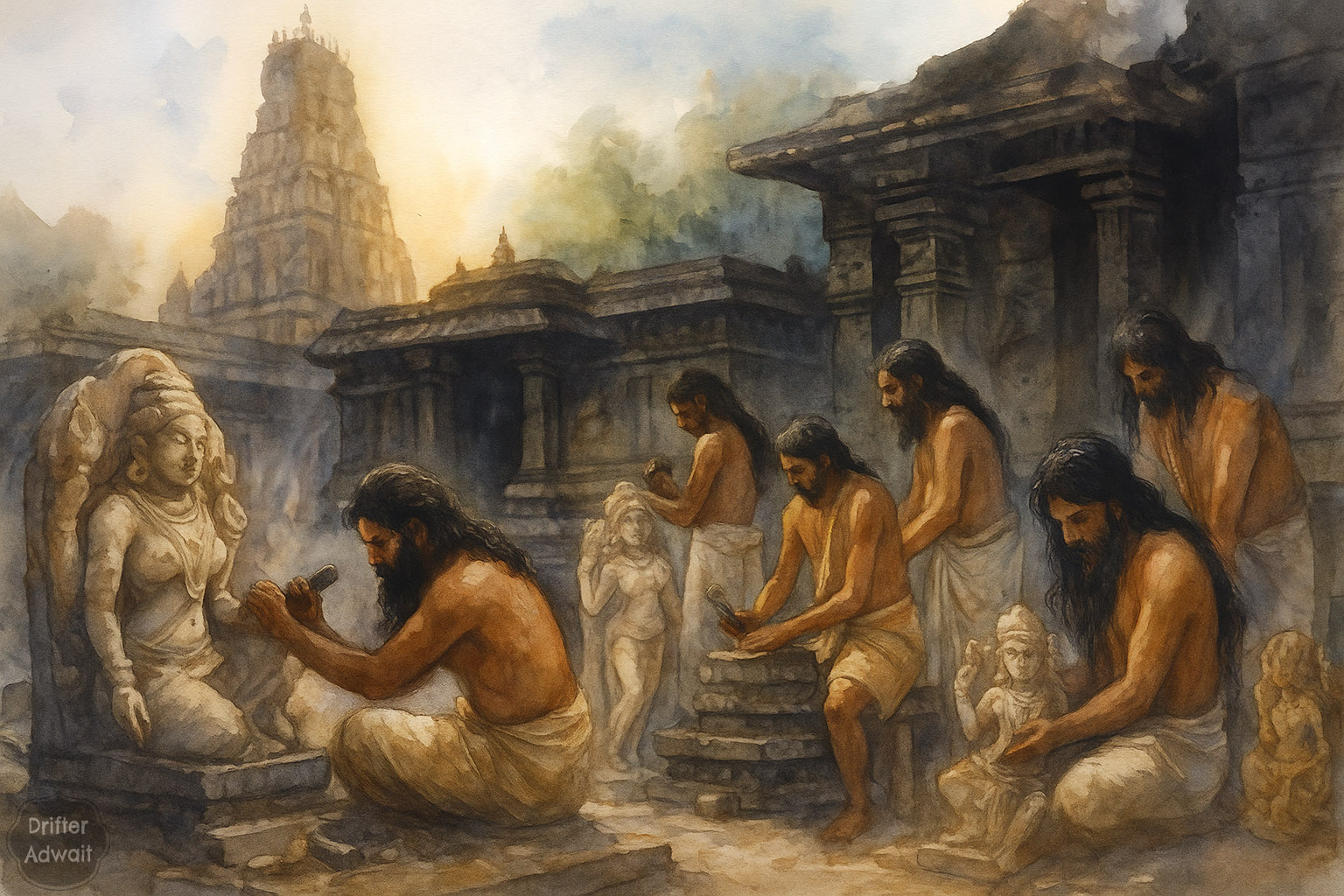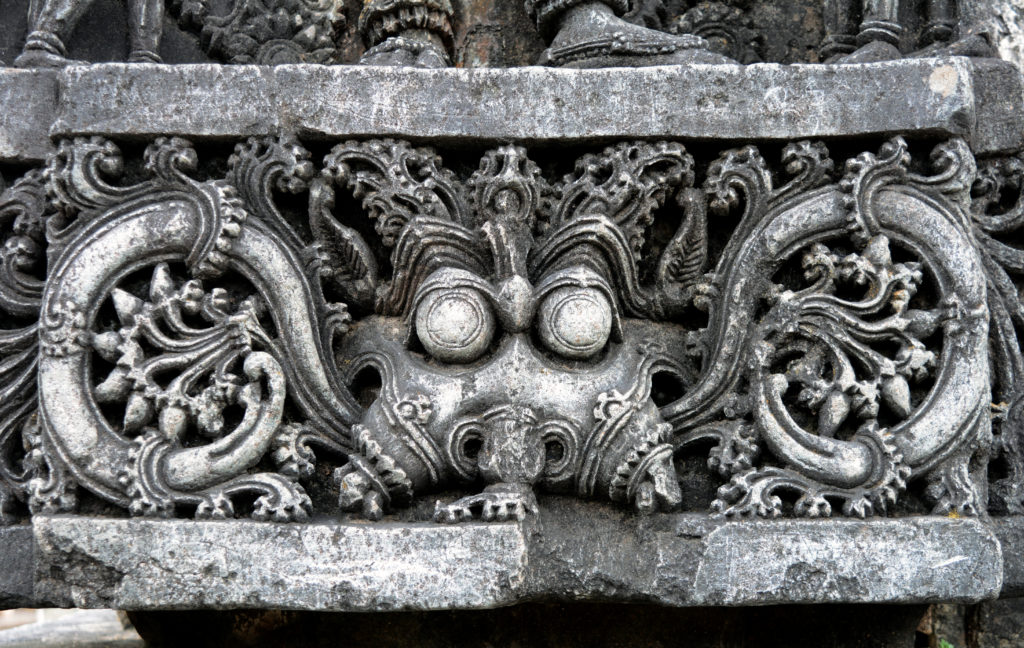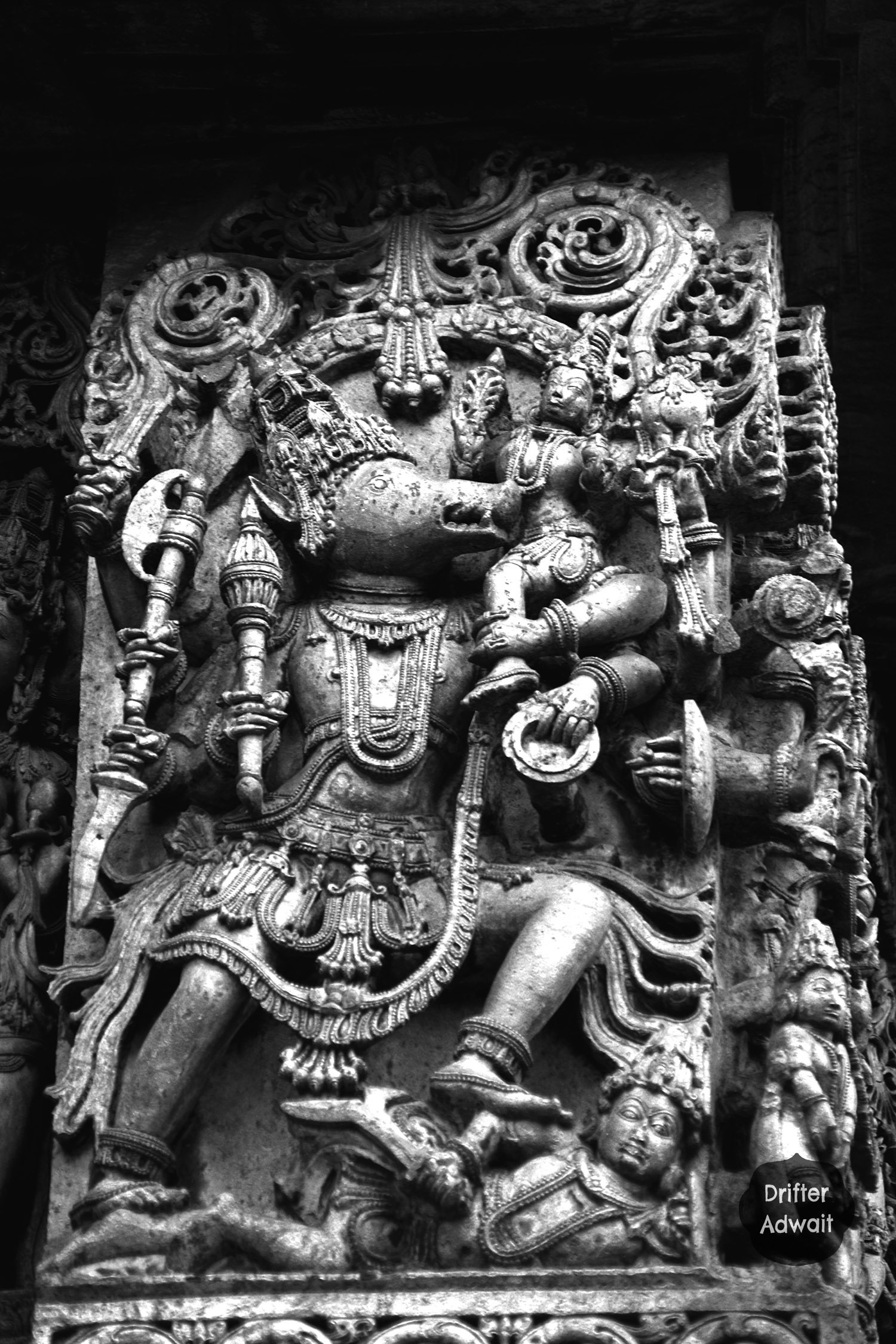Inscriptions: The Silent Storytellers of Indian Temples
When we walk near ancient Indian temples, the stone inscriptions carved on their walls open a window into history. These inscriptions reveal who built the temple, which ruler commissioned it, the purpose behind its construction, and sometimes even the name of the master sculptor. From centuries-old Buddhist cave inscriptions to the records near Shivaji Maharaj’s Raigad memorial, such writings have preserved priceless details of India’s artistic and cultural journey.
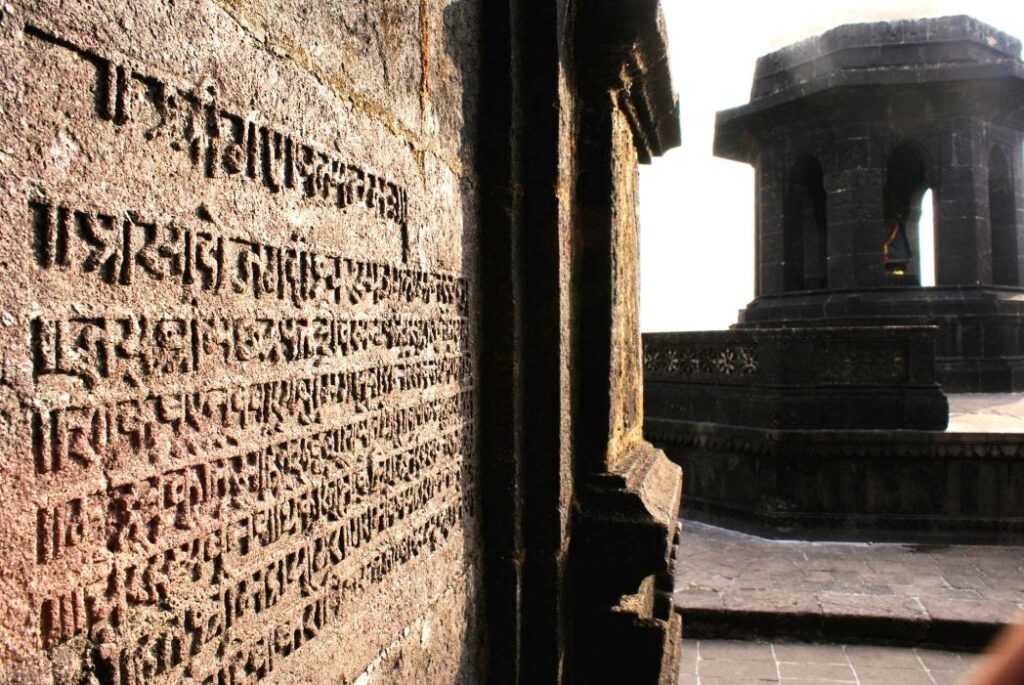
Our temples are adorned with sculptures so finely crafted that they look alive. Thousands of anonymous artisans worked on them, yet their names rarely appear. It seems they worked with the spirit of “Idam Na Mama” (this is not mine), dedicating their art to divinity rather than personal fame. From Ashokan times until the medieval period, countless Indian “Michelangelos” and “Da Vincis” created masterpieces but vanished into obscurity, their names lost to time. This silence of the artist is both humbling and heartbreaking, a reminder that in India, art was primarily a sacred offering rather than an individual pursuit.
The Hoysala Shift: From Anonymity to Identity
From Ajanta’s vibrant murals to Ellora’s magical sculptures, the artists remain nameless. But the Hoysalas of Karnataka changed this tradition. Unlike most dynasties, they often carved the names of their sculptors below significant idols, leaving behind a rare legacy of artistic identity. This act signals a turning point in Indian art history: while devotion remained central, individuality began to find expression.
Dasoja and His Astonishing Sculptures
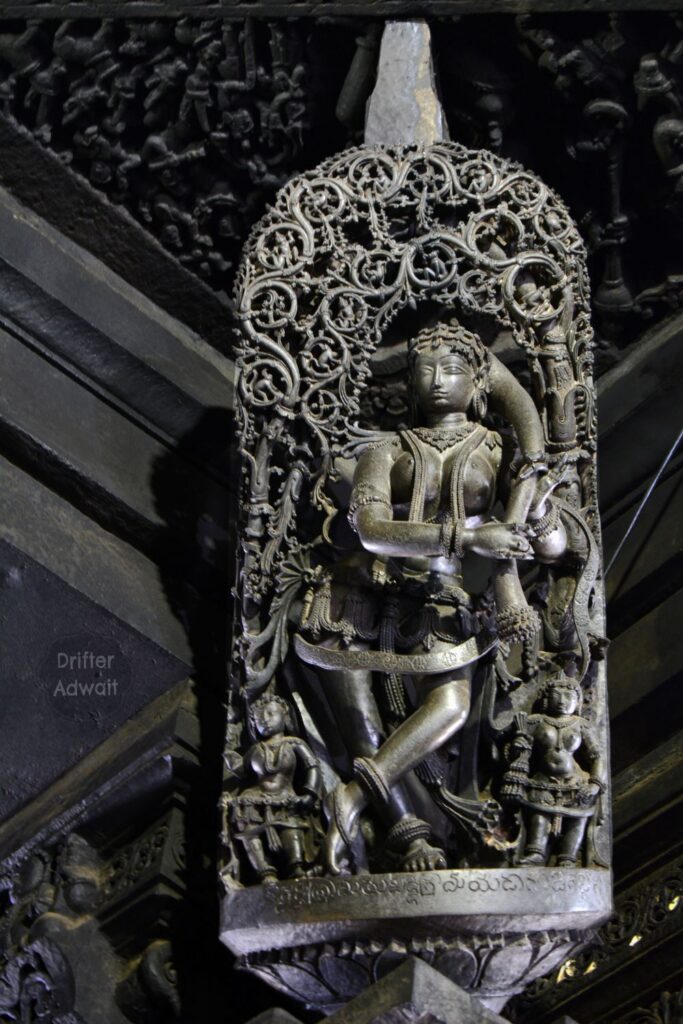
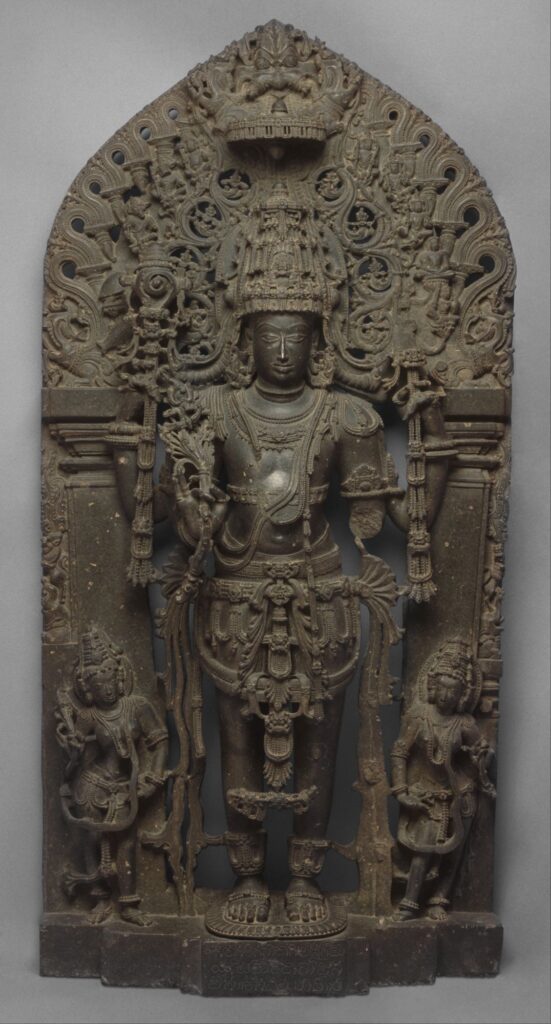
One of the most renowned names is Dasoja, a sculptor whose intricate carvings at the Chennakeshava Temple, Belur, still astonish even in today’s age of 3D printing. His iconic creations include the Natya Sundari, Karpuramanjari, and Bhairavi, collectively called Shilabalikas in Karnataka.
At the feet of these sculptures, Dasoja proudly inscribed:
“Sarasvati Ganadasi Balligrammeyaruvari Dasoja, Birudaruvari Gondalabdiva.”
This inscription not only mentions his name but also references his guild (Sarasvati Ganadasi). Balligrama (today’s Balligavi) was his hometown. Just like musicians mention their gharanas, sculptors too declared their lineage with pride.
Chavana: The Son Who Carried the Torch
Dasoja’s son, Chavana, also carried forward his father’s legacy. He sculpted the famous Darpana Sundari at Belur and worked at both Belur and Halebidu temples. Chavana signed his works with unique titles like Birudaruvari Madan Mahesh and Machcharipu Ruvari Sharabha Bherunda, showing how the next generation of sculptors embraced both tradition and innovation.
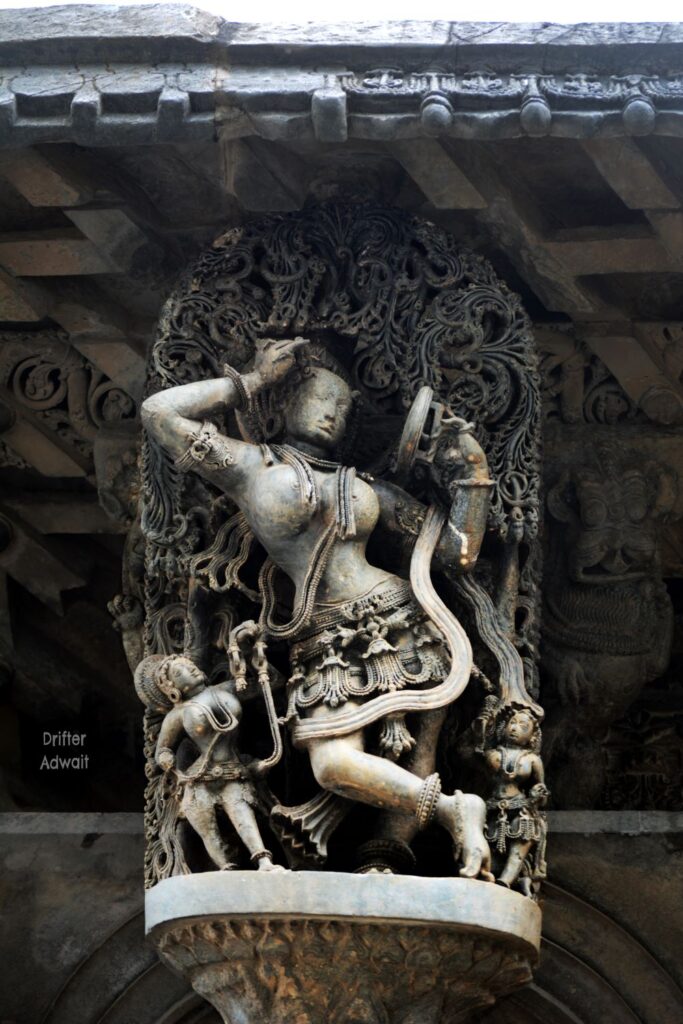
The Bold Birudas: Sculptors and Their Quirky Titles
What sets Hoysala sculptors apart is their use of bold and creative titles (birudas) under their names. These were like medieval “Instagram bios,” reflecting pride, confidence, and even rivalry. Some examples include:
Birudaruvari Gondalabdiva – “The one who strikes down crowds of titled sculptors.”
Birudaruvari Madan Mahesh – “Equal to Shiva among sculptors resembling Kama.”
Machcharipu Ruvari Sharabha Bherunda – “Attacking sculptors like Sharabha fighting a mighty enemy.”
Ruvari Puli – “The lion among sculptors,” used for the guild-leader Malianna.
Machcharipu Birudaruvari Girivajradanda – “As thunder destroys mountains, he destroys rival sculptors.”
Birudaruvari Galgandagattari (Malllonja) – “The one who cuts the necks of great, renowned sculptors!”
These flamboyant titles suggest a healthy competition among sculptors, each striving to surpass the other and prove artistic supremacy.
Haranhalli and the Larger Tradition
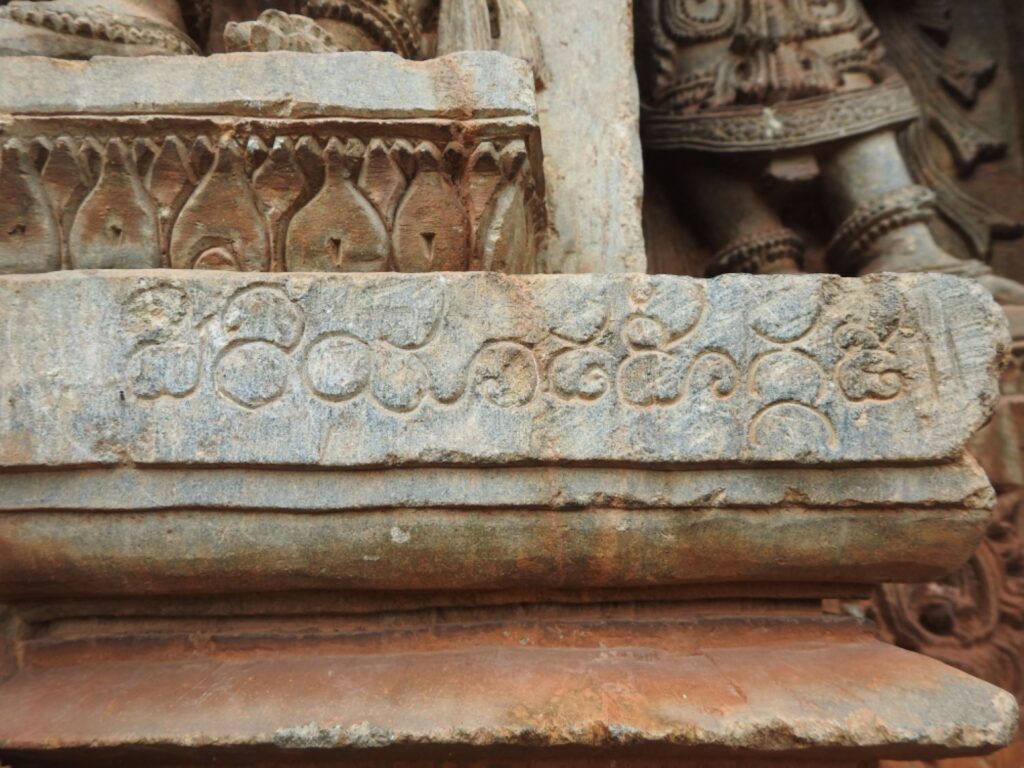
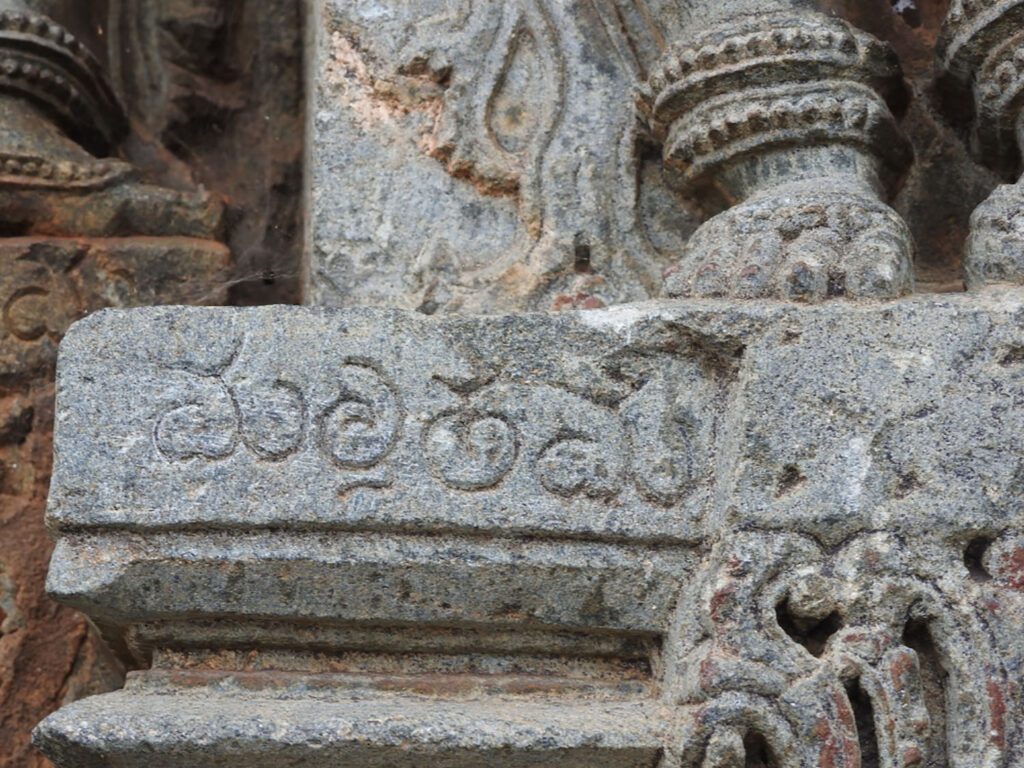
At the Lakshmi Narasimha Temple in Haranhalli, names like Mallitamma and Periyanda Heggade are found inscribed below sculptures, along with cryptic initials such as “Ba-Na” or “Bo.” These were written in old Halegannada script, sometimes with guild symbols instead of words.
This unique practice highlights the confidence and recognition-seeking nature of Hoysala sculptors. Their competitive spirit gave birth to astonishing creations in stone—idols that seem to breathe life, rivaling immortality itself.
Indological Perspective: What This Means for Indian-ness
From the standpoint of Indology, these inscriptions are not merely names; they are a testimony to how India perceived art, artists, and society. Three key insights emerge:
- Art as Yajna, Yet with Identity
For centuries, Indian art was considered an offering, beyond ego and authorship. The Hoysala inscriptions, however, show a transition—where devotion remained, but self-expression began to be acknowledged. This balance between humility and individuality is deeply “Indian,” reflecting a dharmic worldview that honors both collective tradition and personal mastery.
- Guilds and Gharanas in Art
The mention of sculptor guilds (shrenis) echoes how Indian knowledge systems developed in lineages. Just as music has gharanas and spiritual practices have paramparas, art too had its schools of style and technique. This guild culture ensured both continuity and innovation.
- Healthy Rivalry Fuels Creativity
The flamboyant titles demonstrate that even within sacred art, competition existed. But this rivalry was not for commercial gain—it was a divine contest of excellence. It shows that the Indian mind saw no contradiction between devotion and ambition, between surrender and mastery.
Contribution to Indian Art and Culture
The Hoysalas remind us that Indian art is not static—it evolves with time, absorbing new layers of meaning. Their decision to immortalize artists’ names shows a cultural self-awareness, a recognition that human creativity too deserves memory alongside divine glory. This shift foreshadows the later celebration of poets, musicians, and painters in Indian courts.
Most importantly, these signatures and titles embody the essence of Indian-ness—a civilization that blends humility with pride, anonymity with identity, spirituality with artistry. Every chiselled stone at Belur and Halebidu is not only a devotional act but also a bold declaration: “We were here. We created. We dared to compete. And we offered it all to the Divine.”
Conclusion
So, when you visit a Hoysala temple, don’t just admire the grandeur of the sculptures—look closer at the base. You may spot the forgotten signatures of Dasoja, Chavana, Mallitamma, or Malllonja, who poured their soul into these masterpieces. Whisper a silent prayer of gratitude to them. Their art survives, and through it, so does their memory. And if you come across an inscription that says “The one who strikes down great sculptors,” smile—because that was their version of a stylish Insta bio!
The Hoysalas teach us that art is more than ornamentation—it is history, philosophy, and identity carved in stone. And in celebrating them, we celebrate the eternal spirit of Indian creativity.
Key Takeaways
Hoysala sculptors broke tradition by inscribing their names and titles under temple idols, unlike earlier anonymous Indian artisans.
Dasoja and Chavana were among the most celebrated sculptors, leaving iconic works at Belur and Halebidu with their proud signatures.
The unique titles (Birudas) reflected rivalry and confidence, similar to modern social media bios, yet deeply rooted in devotion.
Guild culture shaped Indian art, where sculptors identified themselves with groups, much like musical gharanas or spiritual paramparas.
These inscriptions highlight Indian-ness: the balance of humility and pride, anonymity and individuality, spirituality and artistry.
The competitive spirit of Hoysala artists produced astonishing stone sculptures that continue to inspire awe centuries later.
From an Indological lens, these practices show how Indian art evolved—from nameless offerings to recognized individual contributions.
Visiting Hoysala temples today is not just about admiring beauty, but about honoring the forgotten masters who immortalized themselves in stone.
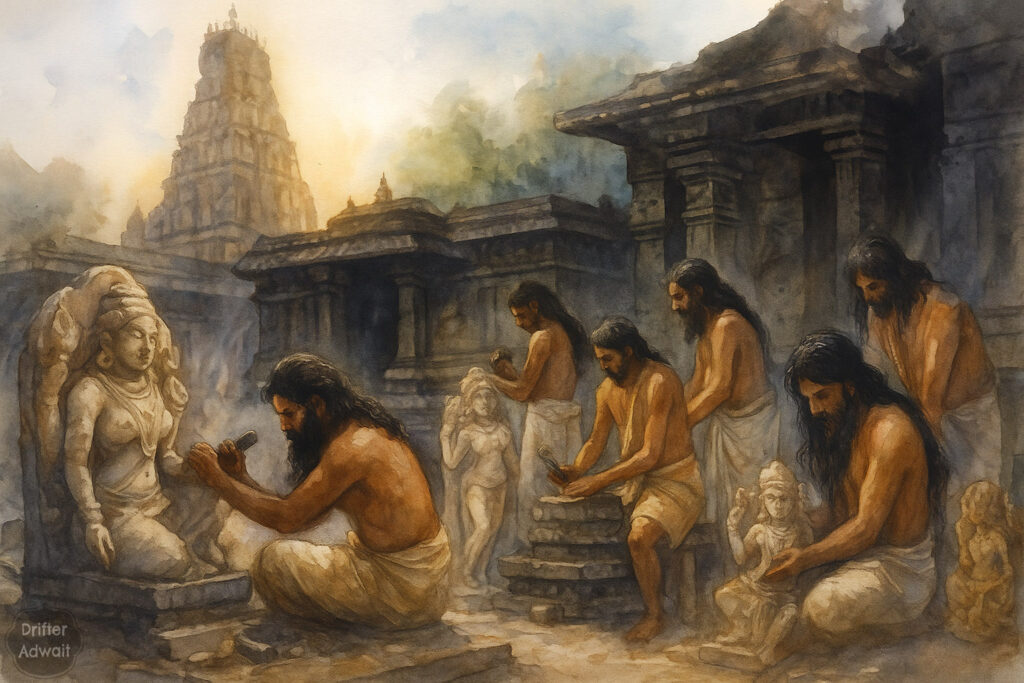
References–
1. Mysore Gazzetier, 1930, Bangalore.
2. The Signed Sculptures of Lakshmi-Narasimha Temple of Harnahalli: Hoysala Sculptors and Their Intricate Designs- By Poorva Salvi.
